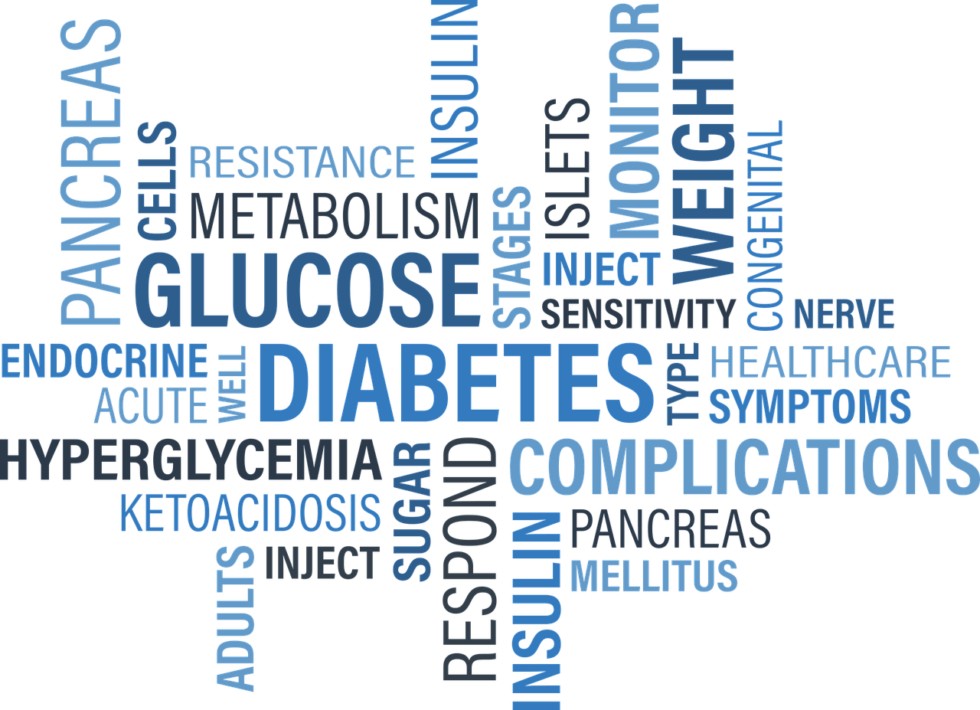Were you or someone you know recently diagnosed with diabetes? While there is no real cure for diabetes, diabetes can be managed through dietary and lifestyle changes, and also through medicine. You’ll work with your healthcare provider to set up a treatment plan that works best for you. In order to be successful at managing your diabetes, it is good to start by learning the basics. Below are some of the most common terms to know.
Diabetes Terms:
Carbohydrate: Carbohydrates are the body’s main source of glucose, which provides the body with energy to function. Carbohydrates are found in many foods including dairy products, fruits, vegetables, and grains. Consuming carbohydrates impacts blood sugar levels.
Glucose: Glucose is the body’s main source of energy. Glucose comes mostly from carbohydrate , Glucose level in the blood is what impacts blood sugar levels.
Blood sugar: This is also called blood glucose, which is how much glucose is in the blood. Blood glucose levels are affected by your diet, stress level, physical activity, illness, medications, and many other factors. The muscles, the organs, and most importantly the brain use glucose for energy, so it is important to have enough glucose in the blood at all times. If blood sugar becomes too high this can also cause issues and overtime can lead to diabetes.
Hyperglycemia: This is the condition of having high blood sugar levels. This can happen from frequently eating high amounts of carbohydrate. Early signs of hyperglycemia include increased thirst, increased urination, blurry vision, tiredness, and headaches. In more severe cases, hyperglycemia can lead to nausea, vomiting, shortness of breath, and confusion, and other symptoms.
Hypoglycemia: This is the condition of having low blood sugar levels. This can happen when going for long periods without eating, or during too much exercise, or because of using medications incorrectly. Hypoglycemia can cause mild symptoms such as hunger, dizziness or confusion, but also severe symptoms including seizures and unconsciousness.
Hemoglobin A1C (HbA1C): A blood test that shows an average blood sugar level over the past 3 months. This measurement is used to diagnose diabetes. A HbA1C above 6.5% is the main sign of diabetes.
Prediabetes: Prediabetes is the condition of having high blood sugar levels, but not high enough to have diabetes. This is classified as a HbA1C between 5.7% and 6.4%. Individuals with prediabetes should ask for guidance from a healthcare professional to lower risk of developing diabetes.
Diabetes: Diabetes is the condition of having a HbA1C level above 6.5%. This means that your cells do not respond to the hormone insulin, so the body cannot control blood sugar normally, resulting in a build up of glucose in the blood (hyperglycemia). Diabetes requires daily disease management through diet, lifestyle, and medications in order to control blood sugars. If blood sugars continue to go uncontrolled, this can lead to further disease development.
Insulin: The hormone that is released in response to carbohydrate intake. Insulin allows glucose to leave the blood and enter your cells, so that cells can use the glucose for energy. In diabetics, the cells do not respond to the insulin, so glucose builds up in the blood.
Unfortunately, many people live with diabetes without even knowing it. Risk factors for diabetes include poor diet, physical inactivity, overweight/obesity, high blood pressure, and high triglycerides, among other factors. It is important to seek guidance and testing from a healthcare professional if you or someone you know may be at risk.
For further reading, check out the American Diabetes Association’s website.
Written by Jessica Hollembeak, RDN


